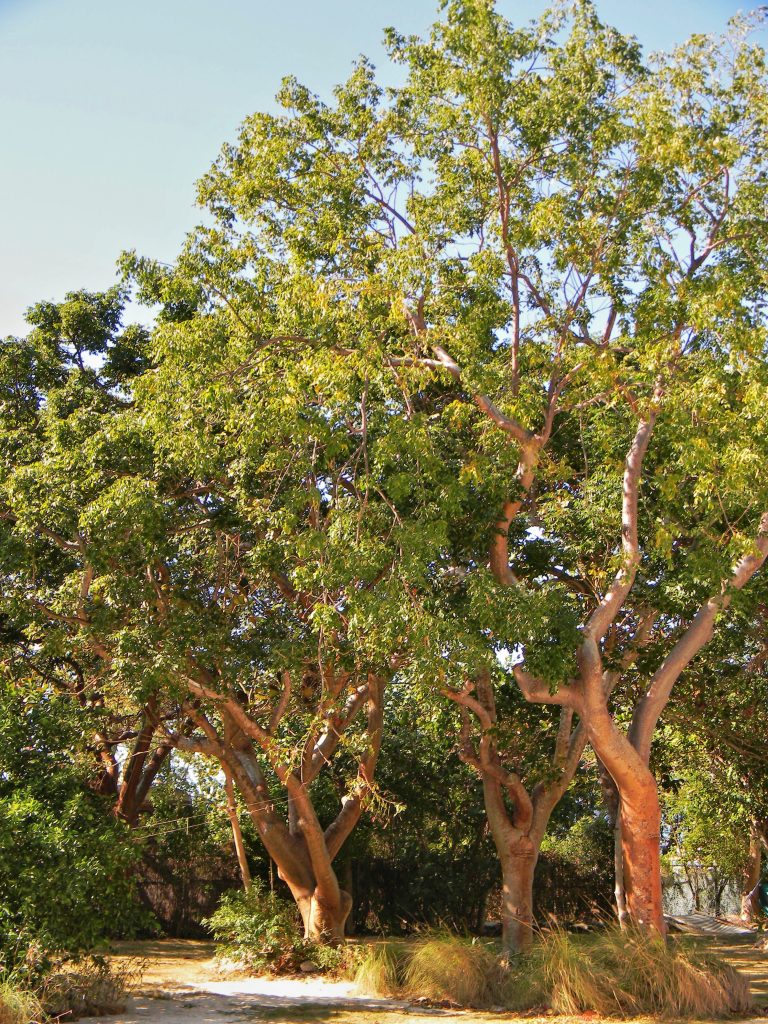The Origins of South Florida Trees
During the entire Pleistocene epoch, which began 2.5 million years ago, and ended 12,000 years ago, glaciers alternately advanced and retreated over the face of the Earth several times, changing the location of the Florida coastline dramatically. Each advance caused sea levels to drop and the Florida peninsula increased in size. Each retreat caused sea levels to rise and most of the southern peninsula was covered by the ocean. Thus, south Florida is young from a geological perspective, and the existing plants (and animals) all originated from adjacent regions.
Temperate zone trees sent their seeds south overland from the coastal plain of the Atlantic and the Gulf of Mexico. These trees include Hackberry (Celtis laevigata), Carolina Ash (Fraxinus caroliniana), Sweetbay Magnolia (Magnolia virginiana), Southern Bayberry (Myrica cerifera), Live Oak (Quercus virginiana), Winged Sumac (Rhus copallinum), Carolina Willow (Salix caroliniana), and Bald Cypress (Taxodium distichum), among others.
Tropical zone trees, mostly from the West Indies, came north over water, their seeds carried in the digestive tracts of birds, or stuck to the bird’s feathers. Lighter seeds were transported directly by wind, and some plants, such as the Red Mangrove (Rhizophora mangle) and Coconut Palm (Cocos nucifera), have seeds that are delivered by ocean currents. Trees that arrived from the tropics include Gumbo Limbo (Bursera simaruba), Pigeon Plum (Coccoloba diversifolia), Sea Grape (Coccoloba uvifera), Guiana Plum (Drypetes lateriflora), Milkbark (Drypetes diversifolia), Poisonwood (Metopium toxiferum), Paradise Tree (Simarouba glauca), and Mahogany (Swietenia mahagoni), as well as many others.
South Florida is also home to a bewildering number of non-native trees which have been imported by people for various uses, and some of these trees have naturalized. Many of these, such as Orchid Tree (Bauhinia variegata) and Royal Poinciana (Delonix regia), are ornamentals cultivated for their attractive foliage and flowers. Others, such as Mango (Mangifera indica) and Papaya (Carica papaya), are grown for their delicious fruits. Still others, such as Australian Pine (Casuarina spp.), were first brought to Florida for use as windbreaks along canals and developed shorelines.
South Florida’s trees are diverse, indeed! The national parks and reserves, national wildlife refuges, state parks, and the many county natural areas of this subtropical region present the naturalist with nearly unlimited opportunities to identify and learn about this unique flora!

